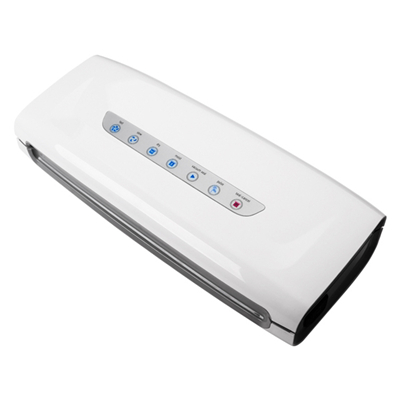Vacuum Packaged Food Doesn't Mean No Spoilage
Vacuum-packaged food does not mean no spoilage, because vacuum packaging technology cannot inhibit food spoilage caused by the reproduction of anaerobic bacteria. Chili sauce, chopped pepper sauce, fermented soya beans, etc. are common to be seen and essentials in daily life. They have a unique taste and are favoured, which are often vacuum-packed. They have good airtightness and are not easy to spoil. However, there was news revealing that the total number of bacteria colonies and water activity of many brands of chili sauce were too high. Can't the vacuum environment inhibit the growth of microorganisms? What are the hazards caused by these two factors exceeding the standard? What indicators for canned food should buyers pay attention to? How to eat chili sauce in a scientific and reasonable way? Let's take a look together.
 Vacuum packaging doesn't mean no spoilage.
Vacuum packaging doesn't mean no spoilage.
To put it simply, vacuum packaging is to remove the air in a completely closed packaging bag, and complete the sealing process after reaching a predetermined vacuum degree, so that the items in the bag can be stored for a long time in a vacuum environment.
For some food that cannot withstand a great vacuum pressure difference, another vacuum packaging technology is often used, that is, vacuum gas-filled packaging, which is to put the items into the packaging bag and extract the air from the packaging bag, and then fill the bag with nitrogen or other mixed gas after reaching a predetermined vacuum. Seal the bag at last.
Removing oxygen can inhibit bacterial. The principle of vacuum packaging is very simple, that is, to remove oxygen in the packaging to prevent the items from spoiling. The microorganisms contained in food are mostly aerobic microorganisms, and their growth and reproduction cannot be separated from oxygen. These microorganisms grow and reproduce in food, which can easily make food spoil. When the oxygen concentration is less than 1%, the growth and reproduction ability of these microorganisms will be effectively inhibited.
The actual operation of vacuum packaging done by a vacuum sealer is also simple and easy. Only need to pack the food on the production line, and then convey it to the vacuum packaging by the conveyor belt. Remove the air in the bag till a preset vacuum degree reaches; use the electrical control equipment to thermally seal it, and then the packaging is complete after cooling.
There should not be any anaerobic bacterium. Vacuum-packed food is not absolutely safe, because vacuum packaging technology cannot inhibit the growth of anaerobic bacteria, thus causing spoilage. If the sterilization is not done well before vacuuming, some anaerobic bacteria will remain on the surface of the sauce. Vacuum packaging just provides a perfect anaerobic environment for these anaerobic bacteria, allowing them to grow and multiply in quantity. The total number of colonies in the chili sauce is likely to exceed the standard, which will eventually lead to swelling in the can.
 Vacuum packaging doesn't mean no spoilage.
Vacuum packaging doesn't mean no spoilage.To put it simply, vacuum packaging is to remove the air in a completely closed packaging bag, and complete the sealing process after reaching a predetermined vacuum degree, so that the items in the bag can be stored for a long time in a vacuum environment.
For some food that cannot withstand a great vacuum pressure difference, another vacuum packaging technology is often used, that is, vacuum gas-filled packaging, which is to put the items into the packaging bag and extract the air from the packaging bag, and then fill the bag with nitrogen or other mixed gas after reaching a predetermined vacuum. Seal the bag at last.
Removing oxygen can inhibit bacterial. The principle of vacuum packaging is very simple, that is, to remove oxygen in the packaging to prevent the items from spoiling. The microorganisms contained in food are mostly aerobic microorganisms, and their growth and reproduction cannot be separated from oxygen. These microorganisms grow and reproduce in food, which can easily make food spoil. When the oxygen concentration is less than 1%, the growth and reproduction ability of these microorganisms will be effectively inhibited.
The actual operation of vacuum packaging done by a vacuum sealer is also simple and easy. Only need to pack the food on the production line, and then convey it to the vacuum packaging by the conveyor belt. Remove the air in the bag till a preset vacuum degree reaches; use the electrical control equipment to thermally seal it, and then the packaging is complete after cooling.
There should not be any anaerobic bacterium. Vacuum-packed food is not absolutely safe, because vacuum packaging technology cannot inhibit the growth of anaerobic bacteria, thus causing spoilage. If the sterilization is not done well before vacuuming, some anaerobic bacteria will remain on the surface of the sauce. Vacuum packaging just provides a perfect anaerobic environment for these anaerobic bacteria, allowing them to grow and multiply in quantity. The total number of colonies in the chili sauce is likely to exceed the standard, which will eventually lead to swelling in the can.
